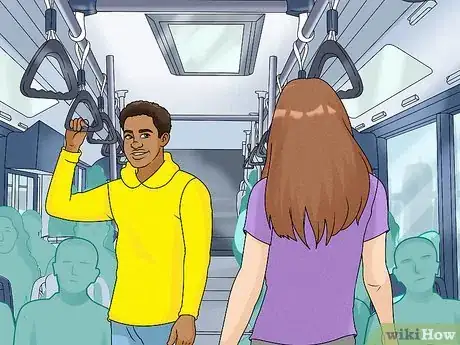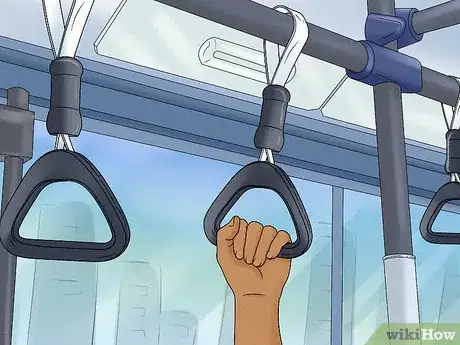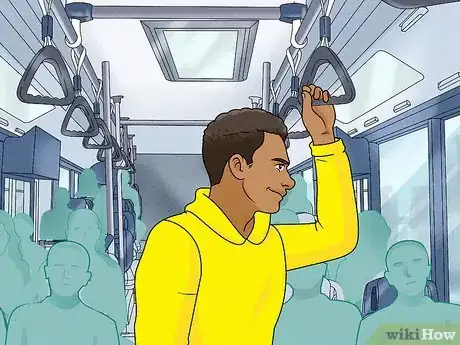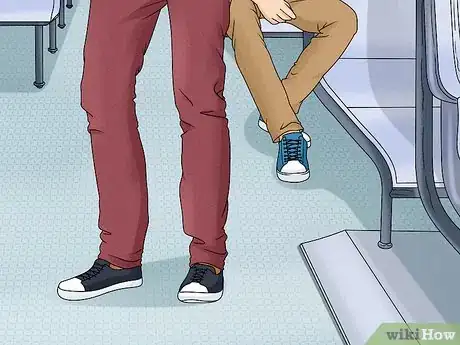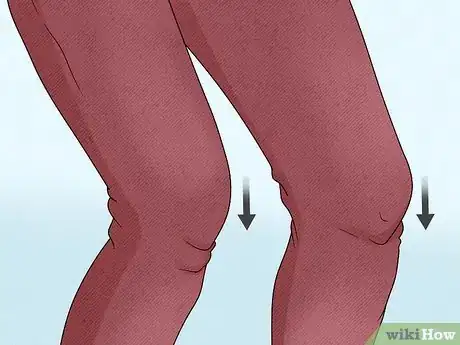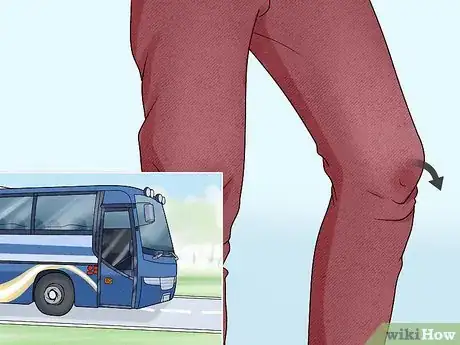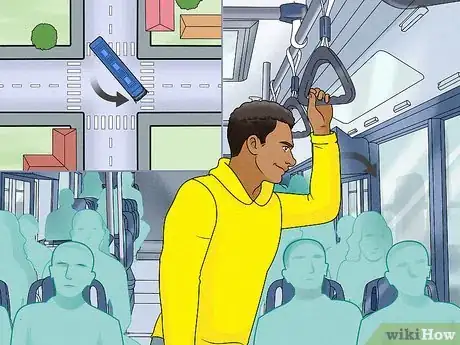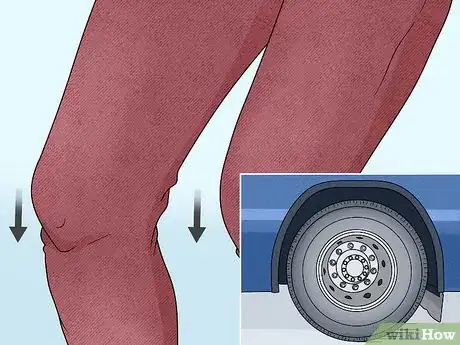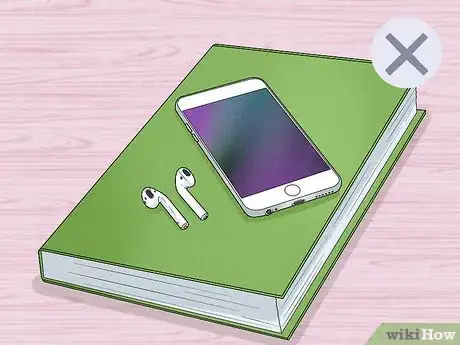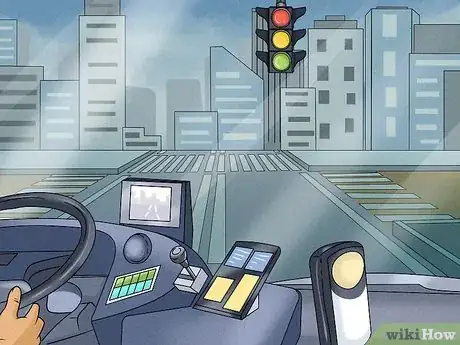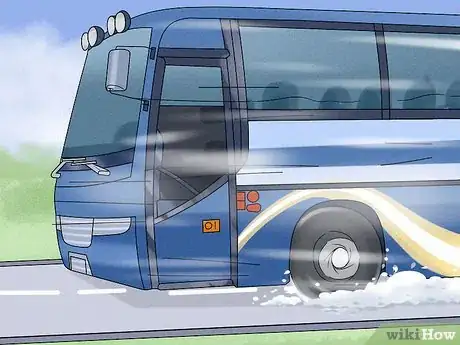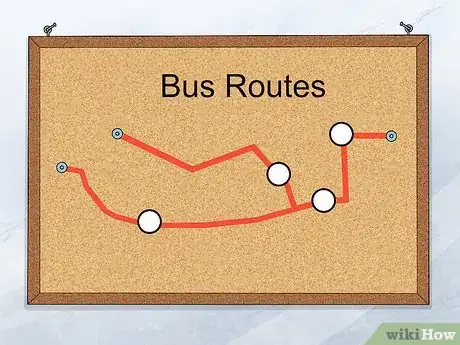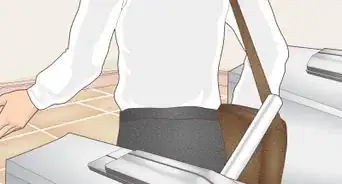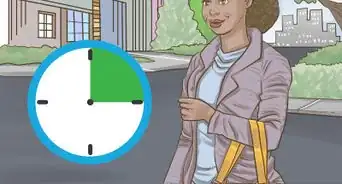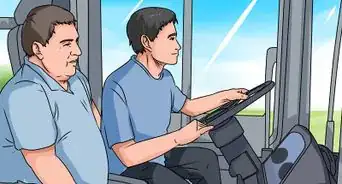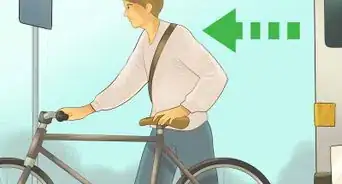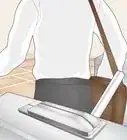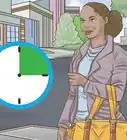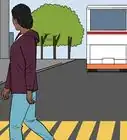X
This article was co-authored by wikiHow Staff. Our trained team of editors and researchers validate articles for accuracy and comprehensiveness. wikiHow's Content Management Team carefully monitors the work from our editorial staff to ensure that each article is backed by trusted research and meets our high quality standards.
This article has been viewed 116,637 times.
Learn more...
You're standing on a crowded bus, surrounded by others like yourself. Then the bus stops suddenly. If you don't have a good hand hold, you go flying forward into other passengers and start a domino effect! With a little forethought, it's easy to keep your footing.
Steps
Method 1
Method 1 of 3:
Choosing a Place to Stand
-
1Stay near the front of the bus. Keep an eye on both the driver and the driver's view of the street ahead to anticipate sudden turns and stops. Avoid the back of the bus if possible, where the effects of turning and/or braking on your balance may be more pronounced.
-
2Stay clear of other people. Allow yourself more room to adjust your footing as needed without stepping on someone else or their belongings. Avoid being knocked off balance by someone else.
- If space is limited onboard, stand near people who aren't carrying any purses, bookbags, or other bulky items that may affect their balance and/or yours.
Advertisement -
3Find a handhold. Prioritize those at hip- or chest-level over those that force you to reach overhead. Keep your center of gravity as low as possible.
- If you prefer keeping your hands free for any reason (fear of germs, dirty surfaces, etc.), go ahead, but stake out a spot within easy reach of a handhold anyway. Keep at least one hand free (preferably the one closest to the handhold) so you can grab it quickly if you lose your balance. Also consider bringing a pair of gloves so you can maintain a firm grip for the duration of the ride.
Advertisement
Method 2
Method 2 of 3:
Keeping Your Balance
-
1Face either side of the bus. Place your feet at least a foot apart from each other, in the shape of a “T.” Aim the toes of whichever foot is closest to the front of the bus in that direction. Keep your rear foot perpendicular to the direction of travel.
-
2Keep your feet and legs active. Stand with your weight on the toes and balls of your feet, ready to spring into action if needed. Keep your heels on the floor, but avoid settling all of your weight on them.
-
3Bend your knees a little. Lower your center of gravity a bit more than usual. Allow your legs to absorb shock from bumpy travel before it can reach any farther upward.
-
4Bend your forward knee during accelerations. Static friction will keep your feet fixed to the floor,[1] but your upper body may feel like it's being pulled back as the bus moves forward. Lean into the direction of travel to compensate.
-
5Lean into turns. Use your rear foot (the one perpendicular to the direction of travel) for lateral stability.
-
6Bend either knee during brakes or stops. Keep the other leg relatively straight. Inertia will propel your body forward when the bus slows down or stops.[2] Either bend your forward knee to absorb your weight as it moves forward and use your toes to push your body backwards again, or bend your rear knee and lean backwards to keep your body relatively stable.
Advertisement
Method 3
Method 3 of 3:
Being Aware of Your Surroundings
-
1Resist distractions. Either put your book, device, and earbuds away entirely, or make a point of looking up from them frequently.[3] Avoid missing visual or audible clues that a sudden turn, stop, or acceleration is about to happen.
-
2Keep an eye on fellow passengers. Note how many people board and/or depart at each stop. Move to the back of the bus if needed to avoid crowding.[4] Also keep an eye out for anyone who's moving up or down the aisle while the bus is in motion.
-
3Pay attention to the ride. Watch outside for upcoming bus stops, traffic lights, and stop signs, as well as other cars or anything else that may prompt your driver into braking, switching lanes, and/or turning onto another street.
-
4Note how fast the bus is moving. The speed of the bus and the severity of braking will affect your balance according to each.[5] The faster the bus is traveling, the more likely the bus will tip forward and then backward if it makes a very sharp and sudden brake, causing you to skid forward.[6] Prepare yourself for the possibility.
-
5Know your route. If it's your first time riding, check the route map to see how frequently the bus stops for both scheduled stops and traffic lights. Familiarize yourself with the route the more you ride it. Pay attention to the quality of the road's surface as well as the time of day and how that factors into traffic congestion to better anticipate how often the bus may slow down, brake, or stop.
Advertisement
Community Q&A
-
QuestionAm I allowed to walk around on a bus while it is in motion?
 Community AnswerMost bus agencies have rules about where you can stand while the bus is moving. There may be a yellow line on the floor near the driver in front of which you can't stand. It is generally safer to stay still while the bus is moving, whether you are sitting or standing. If you have to walk around for some reason, make sure you hold onto poles or ceiling straps.
Community AnswerMost bus agencies have rules about where you can stand while the bus is moving. There may be a yellow line on the floor near the driver in front of which you can't stand. It is generally safer to stay still while the bus is moving, whether you are sitting or standing. If you have to walk around for some reason, make sure you hold onto poles or ceiling straps.
Advertisement
Warnings
- Keep an eye out for other passengers who may not be able to keep their footing.⧼thumbs_response⧽
- This is not meant to be used as a substitute for holding onto the hand rails. The hand rails are there for your safety, use them if possible.⧼thumbs_response⧽
- Don't stand when you don't have to. Take a seat whenever possible to reduce accidents.⧼thumbs_response⧽
Advertisement
References
- ↑ http://galileo.phys.virginia.edu/classes/105N/1996/problem_set_1_answers.html
- ↑ http://www.yale.edu/ynhti/curriculum/units/2003/4/03.04.06.x.html
- ↑ http://seattletransitblog.com/2013/12/04/psa-standing-the-right-way/
- ↑ http://seattletransitblog.com/2013/12/04/psa-standing-the-right-way/
- ↑ http://www.yale.edu/ynhti/curriculum/units/2003/4/03.04.06.x.html
- ↑ http://galileo.phys.virginia.edu/classes/105N/1996/problem_set_1_answers.html
About This Article
Advertisement

